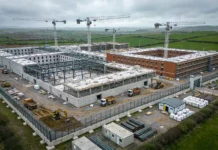The Human Element in Equipment Evolution
Heavy machinery operators spend extended shifts controlling complex equipment in demanding environments. Conventional equipment design prioritized machinery functionality with operator experience treated as secondary consideration. Contemporary heavy equipment manufacturers increasingly recognize that operator well-being directly correlates with safety performance, productivity, and equipment utilization efficiency.
Operator-centric machinery design represents a fundamental reorientation in how manufacturers approach equipment engineering. Rather than adapting operators to machines, modern design philosophy adapts machines to human capabilities and limitations. This human-focused approach delivers measurable improvements in site safety, operational efficiency, and equipment profitability across entire project lifespans.
The Business Case for Human-Centered Design
Productivity and Performance Enhancement
Research consistently demonstrates that comfortable, well-supported operators perform more effectively than those struggling with uncomfortable equipment. Muscular fatigue, postural strain, and cognitive overload reduce concentration and decision-making quality, directly impacting productivity metrics. Operator-centric machinery design minimizing these stressors enables sustained high-performance operations throughout extended work shifts.
Reduced operator fatigue translates to quantifiable productivity gains. Studies tracking earthmoving equipment operators demonstrate that ergonomically optimized cab designs and control systems increase productive work time by 10-15% compared to baseline equipment. This improvement reflects both increased operating hours before rest requirements and enhanced decision-making quality during extended shifts.
Equipment damage prevention represents another productivity dimension. Well-designed operator interfaces reduce control errors, mishandling, and unintended actions that damage equipment. Ergonomically positioned control systems minimize awkward movements that compromise precision, particularly important during delicate operations requiring fine motor control.
Safety Performance Integration
Construction equipment accidents frequently involve operator errors attributable to fatigue, poor visibility, uncomfortable positioning, or confusing control systems. Operator-centric machinery design systematically addresses these factors, creating synergistic safety improvements. While individual interventions—improved visibility, better controls, enhanced comfort—each contribute to safety, their combined effect proves substantially greater than cumulative individual impacts.
Fatigue-related performance degradation represents a significant but often overlooked safety factor. Operators experiencing physical discomfort exhibit measurable declines in reaction time, situational awareness, and decision-making quality. Reducing fatigue through superior ergonomic design directly translates to improved safety performance across all operational scenarios.
Ergonomic Design Principles in Heavy Equipment
Cab Environment and Visibility Optimization
Modern equipment cabs represent sophisticated environments integrating comfort, visibility, and operational functionality. Strategic window placement, camera system integration, and advanced display technologies create visibility comprehensive enough to eliminate dangerous blind spots while minimizing operator distraction.
Glass composition has evolved significantly, with modern cabs employing laminated safety glass, tinted coatings reducing sun glare, and self-cleaning surfaces that maintain optical clarity in dusty environments. Window proportions and positioning reflect ergonomic analysis determining optimal sightlines for common operational tasks. Curved glass configurations extend peripheral vision without introducing optical distortion that could compromise depth perception and spatial awareness.
Camera systems have become integral to visibility strategies. Multiple perspectives—front, rear, sides, and overhead views—feed to display systems positioned for easy operator reference. Wide-angle, narrow-angle, and 3D imaging modes adapt to specific operational requirements. Integration with proximity warning systems creates multi-layered approaches to preventing contact incidents.
Lighting systems in modern equipment cabs achieve levels previously available only in office environments. LED arrays provide adjustable illumination enabling operators to control light intensity matching ambient conditions, reducing eye strain during extended operations. Color temperature adjustments support circadian rhythm maintenance during shift work, with research suggesting that appropriate lighting reduces fatigue and improves alertness.
Seating Systems and Postural Support
Operator seating evolved dramatically from simple cushioned surfaces to sophisticated ergonomic systems integrating suspension, adjustability, and dynamic support. Suspension systems isolate operators from vibration generated during equipment operation, with air suspension springs compressing and extending to absorb ground-transmitted vibrations that previously caused chronic back injuries.
Modern seats employ memory foam technology and dynamic cushioning systems that distribute body weight across support surfaces, eliminating pressure points that generate discomfort during extended operation. Height-adjustable mechanisms enable personalization accommodating operators of varying body dimensions—critical consideration given diverse workforces. Multiple adjustment axes allow lumbar support, backrest angle, armrest height, and seat depth customization supporting individual physiological requirements.
Seat material science has progressed substantially. Breathable mesh upholstery reduces heat accumulation during warm-weather operations, while thermal insulation properties address cold-climate comfort. Anti-microbial treatments reduce pathogen colonization, addressing hygiene concerns in shared equipment environments. Durable synthetics exceed leather performance in longevity while maintaining aesthetic appearance and ease of cleaning.
Control System Design and Ergonomic Integration
Control interface design profoundly influences operator experience and safety performance. Modern equipment employs joystick systems designed around natural hand positioning, with ergonomic angles reducing wrist strain and repetitive stress injuries. Force-feedback mechanisms provide tactile information communicating equipment state—resistance indicating load changes or terrain characteristics—enhancing operator awareness.
Proportional control systems enable precise equipment manipulation impossible with simpler on-off switches. Proportional hydraulics responding to control input magnitude rather than simple binary commands facilitate delicate operations requiring nuanced equipment response. Experienced operators develop intuitive understanding of control dynamics, enabling fluid precision movements.
Programmable control logic personalizes equipment response to individual operator preferences. Saved profiles maintain customized sensitivity settings, allowing operators to resume preferred configurations immediately upon equipment access. This personalization approach recognizes that experienced operators develop calibrated expectations for equipment response characteristics, and accommodating these preferences reduces cognitive load during actual operations.
Assistive Technologies and Automation Integration
Advanced Positioning and Slope Monitoring
Grade control systems have transitioned from optional premium features to standard inclusions in heavy equipment. Laser-based, GPS, and inertial measurement systems continuously monitor equipment position and orientation relative to grade specifications. Real-time feedback enables operators to maintain precise grades with minimal oversight, reducing physical strain from constant positioning adjustments.
3D machine control systems present grade information through visual displays, eliminating operator guesswork about actual versus target elevations. Automatic blade or bucket positioning systems progressively reduce manual control requirements, with some systems capable of complete autonomy for repetitive grading operations. This automation reduces operator fatigue while maintaining productivity during monotonous tasks.
Slope monitoring systems provide critical safety information for steep terrain operations. Real-time angle measurement and visual/audio warnings alert operators approaching equipment tipping thresholds, preventing rollovers through early intervention. This technology proves particularly valuable in challenging topography where visual assessment of slope angles frequently proves misleading.
Collision Avoidance and Proximity Systems
Proximity warning systems have evolved from simple reversing alarms to sophisticated multi-sensor arrays providing comprehensive situational awareness. Forward-facing radar systems detect obstacles and pedestrians ahead of equipment, generating escalating warnings as objects approach. Ultrasonic sensors detect objects at close range, with warning intensification as distance decreases.
Integrated backup camera systems display real-time video of rear areas on cab monitors, enabling operators to navigate precisely without blind-spot hazards. Wide-angle fisheye lenses capture areas beyond conventional camera ranges, providing comprehensive rear visibility. Some systems employ predictive algorithms highlighting potential hazards and generating warnings before contact risk becomes imminent.
Predictive Maintenance Interfaces
Operator interfaces increasingly present equipment health information supporting preventive maintenance decisions. Visual indicators communicate system pressures, fluid temperatures, and filter conditions, alerting operators to developing issues before catastrophic failures occur. Remote monitoring systems enable service providers to assess equipment status from external locations, enabling proactive maintenance scheduling.
These interfaces transform operators into active participants in equipment maintenance rather than passive users. When operators understand relationships between operational parameters and equipment health, they self-regulate usage patterns avoiding conditions accelerating wear. This collaborative relationship between equipment and operator optimizes longevity while reducing maintenance emergencies disrupting project schedules.
Customization and Individual Operator Support
Biometric Monitoring and Fatigue Detection
Advanced equipment increasingly incorporates biometric monitoring systems detecting operator fatigue through performance pattern analysis. Eye-tracking systems identify microsleep episodes, while heart rate monitoring detects stress or physical strain indicators. When fatigue indicators exceed thresholds, systems generate warnings prompting rest breaks before safety consequences materialize.
These technologies remain controversial regarding privacy implications, yet progressive operators recognize advantages. Fatigue-related equipment incidents present catastrophic liability exposure; biometric monitoring systems preventing these events demonstrate clear value exceeding privacy concerns. Transparent policies and operator consent frameworks address ethical considerations while capturing safety benefits.
Adaptive Control Systems
Machine learning algorithms enable equipment that learns individual operator preferences and adapts responsiveness accordingly. Systems monitoring control patterns develop profiles of typical operator technique, predicting intended actions and pre-positioning equipment for smoother operation. This anticipatory approach reduces required operator attention while improving control precision.
Personalized alert thresholds reflect individual operator experience levels and work patterns. Novice operators receive more frequent warnings and greater system intervention, while experienced operators enjoy streamlined interfaces requiring minimal system involvement. This graduated approach supports safe learning curves for developing operators while enabling veteran operators to work independently.
Safety Culture Integration and Training
Ergonomic Awareness Programs
Comprehensive operator training increasingly emphasizes ergonomic principles and fatigue awareness alongside equipment operation. Training programs educate operators about body mechanics, posture maintenance, and repetitive stress injury prevention. Understanding the physiological basis for equipment design recommendations increases operator buy-in and compliance with recommended practices.
Regular ergonomic assessments during operator training identify individual biomechanical issues requiring specific accommodations. Some operators with preexisting joint problems, prior injuries, or physical limitations require equipment customization supporting safe operation. Individualized ergonomic consultation addresses specific needs, expanding equipment accessibility for diverse operator populations.
Continuous Feedback Systems
Real-time performance feedback systems encourage safe operating practices. Visual displays communicating control smoothness, acceleration rates, and precision metrics provide immediate information about operating technique. Operators recognizing their performance patterns become motivated to adjust behavior improving both comfort and efficiency.
Comparative performance metrics showing peer operation patterns motivate improvement without excessive pressure. When operators see that experienced colleagues achieve superior results through specific techniques, peer influence drives adoption of those practices. Gamification elements—performance scoring, achievement recognition, leaderboards—leverage psychological motivation factors supporting sustained behavior change.
Future Directions in Operator-Centric Design
Emerging technologies continue advancing operator-centric machinery design capabilities. Augmented reality systems overlay operational information onto real-world views, providing situational awareness without requiring attention shifts to separate displays. Haptic feedback systems communicate equipment state through subtle vibrations, enabling intuitive understanding of operational conditions.
Exoskeleton integration represents revolutionary potential, with wearable support structures reducing operator muscle effort requirements while maintaining sensory feedback and control authority. These systems prove particularly beneficial during extended high-force operations, enabling sustained productivity while minimizing fatigue and repetitive stress injuries.
The construction industry increasingly recognizes that operator well-being and equipment performance represent inseparable objectives. Organizations embracing operator-centric machinery design establish competitive advantages through superior safety performance, enhanced productivity, and improved operator retention. As manufacturers continue advancing ergonomic integration, operator experience becomes primary design consideration rather than secondary accommodation, fundamentally transforming how construction equipment serves human operators.





























